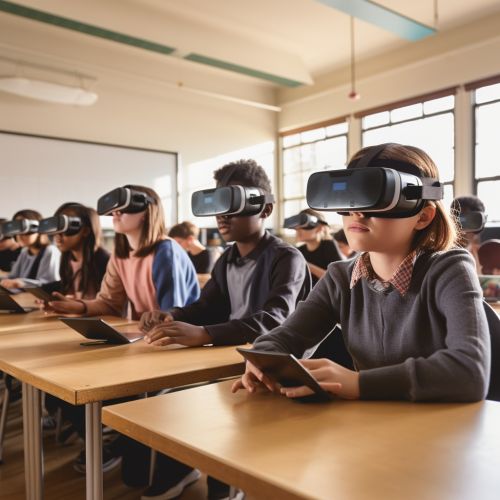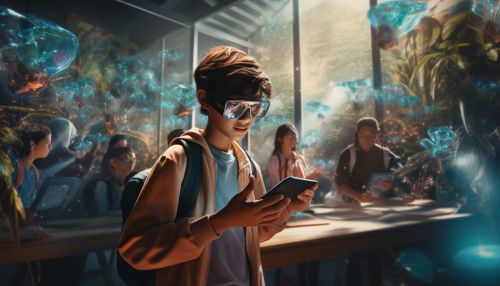The Role of Augmented Reality in Education and Training
Introduction
Augmented Reality (AR) is an interactive experience of a real-world environment where the objects that reside in the real world are enhanced by computer-generated perceptual information. AR alters one's ongoing perception of a real-world environment, whereas virtual reality completely replaces the user's real-world environment with a simulated one. In the context of education and training, AR has the potential to revolutionize learning by integrating digital information in a user’s environment in real time.
History and Evolution of AR in Education and Training
The concept of AR is not new; it has been in existence since the early 20th century, but its application in education and training has gained momentum in the recent years due to the advancement in technology. The first functional AR systems that provided immersive mixed reality experiences for users were invented in the early 1990s, starting with the Virtual Fixtures system developed at the U.S. Air Force's Armstrong Laboratory in 1992.


The Role of AR in Education
AR plays a significant role in the modern educational system. It provides an interactive learning experience by bringing static objects to life. It can make complex information understandable and transform a traditional classroom into a whole new world of learning.
Enhancing Learning Experience
AR can enhance the learning experience by making it interactive and engaging. It allows students to interact with the learning material in a way that is not possible with traditional methods. For example, in a biology class, students can use AR to visualize and interact with the human body in 3D, making it easier to understand complex concepts.
Improving Knowledge Retention
AR can improve knowledge retention by providing a memorable learning experience. Studies have shown that students who learn through AR have a higher retention rate compared to those who learn through traditional methods. This is because AR engages multiple senses, which leads to better memory recall.
Promoting Collaborative Learning
AR promotes collaborative learning by allowing students to work together in a shared AR environment. This encourages teamwork and enhances communication skills. For example, in a history class, students can use AR to explore historical sites together, discuss their findings, and learn from each other.
The Role of AR in Training
AR has a significant role in training, especially in fields that require hands-on experience. It provides a safe and controlled environment where trainees can practice without the risk of making costly mistakes.
Enhancing Skills Development
AR enhances skills development by providing a realistic training environment. For example, in medical training, AR can be used to simulate surgeries, allowing trainees to practice and improve their surgical skills without the risk of harming a patient.
Improving Performance
AR can improve performance by providing real-time feedback. It can track a trainee's performance and provide instant feedback, allowing them to correct their mistakes and improve their skills. For example, in sports training, AR can be used to analyze a player's performance and provide feedback on how to improve their technique.
Reducing Training Costs
AR can reduce training costs by eliminating the need for physical resources. For example, in aviation training, AR can be used to simulate flight scenarios, eliminating the need for expensive flight simulators.
Future of AR in Education and Training
The future of AR in education and training looks promising. With the advancement in technology, AR is expected to become more accessible and affordable, making it a common tool in education and training. It is anticipated that AR will transform the way we learn and train, making it more interactive, engaging, and effective.
Challenges and Limitations
Despite its potential, AR in education and training faces several challenges and limitations. These include technical issues, such as the need for high-quality hardware and software, and practical issues, such as the need for effective AR content and the potential for distraction. Furthermore, there are concerns about privacy and security, as AR requires access to personal data and location information.
Conclusion
AR has the potential to revolutionize education and training by providing an interactive and engaging learning experience. It can enhance learning, improve knowledge retention, promote collaborative learning, enhance skills development, improve performance, and reduce training costs. However, there are challenges and limitations that need to be addressed to fully realize its potential.
